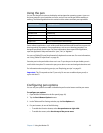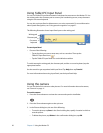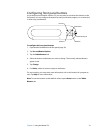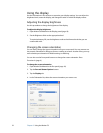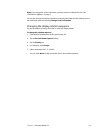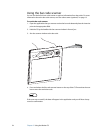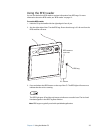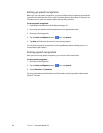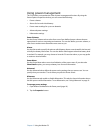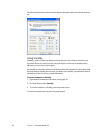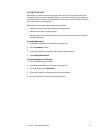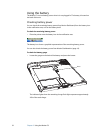26 Chapter 3 Using the Motion C5
Using the built-in microphones
You can use the built-in microphones to record audio, dictate notes, and use voice
commands. The two microphones are used at the same time to optimize sound detection
for speech recognition and voice recording.
You can use the Speak Anywhere acoustics software to fine tune the built-in microphones
to suit your environment. The software enables you to use the microphones in a variety of
settings, including small or large groups, noisy environments, or for individual dictation or
voice commands. The software improves the microphone reception by:
• Removing all sounds outside of the user-defined angle of acceptance.
• Minimizing background and ambient noise.
• Removing echo caused by the microphone picking up the speaker output (feedback).
Setting up the angle of acceptance
The angle of acceptance defines how the built-in microphones detect sounds. You can
remove all sounds outside of a specified angle. When recording, dictating, or using voice
commands, you may need to adjust this setting until you achieve the desired results.
To set up the angle of acceptance
1. Open Motion Dashboard to the Audio panel (page 18).
2. Under Microphone, select one of the following:
• Narrow angle. Configures the microphones to detect sound on a narrow angle near
the bottom center of the display. Narrow is the best setting for dictation, Voice over
IP, or “voice noisy” environments.
• Medium angle. Configures the microphones to detect sound at a wider angle.
Medium is the best setting for a small group, conference table, or “voice quiet”
environment.
• Wide angle. The microphones detect sound at the widest angle. If the microphones
are detecting too much background noise, change to a narrower setting.
If a sound is loud enough, the microphones will pick it up regardless of the angle of
acceptance setting.
You can limit the detection of these outside sounds by turning down the microphone level
and speaking louder. This reduces the microphones’ range and restricts the capability to
detect extraneous sounds.




